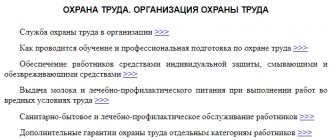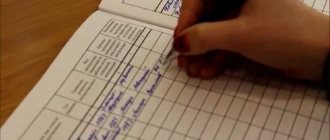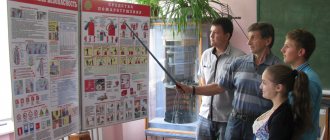Evgeniya
S. Arvarova , business analyst at DIRECTUM
If an organization employs several thousand employees, some of whom work remotely, it is sometimes difficult to organize interaction with them on personnel issues. At the same time, the legislation still imposes an obligation on employers to familiarize employees with certain documents only upon signature. And yet, it is quite possible to optimize this process at least partially using modern technologies. More details below.
Article 22 of the Labor Code of the Russian Federation on the fundamental rights and responsibilities of the employer states that the employer is obliged to familiarize employees, against signature, with the adopted local regulations directly related to their work activities. And according to Part 2 of Art. 212 of the Labor Code of the Russian Federation, the employer is obliged to provide training for workers on labor protection, as well as training workers in safe methods and techniques for performing work and providing first aid to those injured at work, as well as ensure that workers are familiar with labor protection requirements.
Failure to comply with these requirements will result in fines and even suspension of operations in some cases. If a state labor inspector identifies violations in this area, the following sanctions will be applied to the employer:
1) a fine in the amount of 15 to 25 thousand rubles will be imposed on an official of the employer in accordance with Part 3 of Art. 5.27.1 Code of Administrative Offenses of the Russian Federation;
2) a fine in the amount of 110 to 130 thousand rubles will be imposed on the legal entity or a warning will be issued in accordance with Part 3 of Art. 5.27.1 Code of Administrative Offenses of the Russian Federation;
3) persons carrying out entrepreneurial activities without forming a legal entity will be subject to a fine in the amount of 15 to 25 thousand rubles in accordance with Part 3 of Art. 5.27.1 Code of Administrative Offenses of the Russian Federation.
The employer should provide training
workers on labor protection, as well as training workers in safe methods and techniques for performing work and providing first aid to victims at work;
familiarization
of workers with labor protection requirements with the employee affixing a personal signature and date in the relevant documents: magazines, familiarization sheets.
In addition, it should be removed
from the work of workers who have not undergone training and testing of knowledge and skills in the field of labor protection in accordance with the established procedure.
Difficulties in organizing familiarization
Difficulties in familiarization arise due to several factors: the volume of documents, the need for signing by remote employees, the need to organize a guaranteed signing and comply with its deadlines. Let's take a closer look.
If an organization employs several thousand employees, then as part of personnel events for employees, more than 500 documents may appear per day: upon hiring, dismissal, transfer, etc. If we add more documents for the appointment of those responsible, including specialized checks for admission to work that has the status of especially dangerous, familiarization sheets, then the number can reach up to 1000 documents. If all this is done in paper form, then this becomes a hindering factor in internal processes.
If some employees work remotely, then organizing familiarization with documents of remote employees in a way that is quick and convenient becomes a problem.
HR and labor protection specialists are required to familiarize employees with internal labor regulations, safety regulations and other local regulations. Employees get acquainted with documents when applying for a job, most often in the personnel department, when all the necessary documents are at hand and the employee signs manually.
But over time, changes are made to local regulations. Orders for personnel appear. Clerks prepare orders for core activities, permits for hazardous work, lists and directions for medical examinations. All these documents require employee signatures. You cannot sign an order from your manager, put it in a folder and wait until the employee has the opportunity to come in and review the document.
The legislation for certain types of documents establishes a period during which the employer is obliged to familiarize the employee “on receipt.” Thus, Article 193 of the Labor Code of the Russian Federation establishes a period of 3 days for orders for disciplinary action. Judicial practice shows that it is also not worth delaying the review of documents for which such a period is not established by law. Courts often pay attention to the timeliness of preparation of documents, to when the employee is familiar with the documents. Thus, from the appeal ruling of the Moscow City Court dated 02/08/2016 in case No. 33 - 4253/2016, it is clear that the court sided with the employer, because all documents were completed on time, in accordance with the law.
If the organization is small and everyone is in the same office, then organizing an introduction is quite simple. Difficulties begin if the organization has several thousand employees, and many of them work in the shops, and some work “in the fields” at fields, construction sites or in remote departments, which can sometimes only be reached by helicopter.
Methodology for teaching workplace organization
- October 17, 2009
In modern education, the main emphasis is on the activity of students in the learning process, and the position that the success of learning is based on general learning activities is becoming increasingly recognized.
However, in order for students to “transfer a range of roles”, it is necessary to teach them general ways of acting. In this regard, in primary education, it becomes relevant to form such methods of activity that will allow the student to design and perform various types of activities at a conscious level.
When developing a methodology for teaching children 6-10 years old, it is necessary to find a way to transmit technical information that would be accessible to children of this age. In our opinion, the most optimal method for this purpose is the modeling method, which is widely used in preschool educational institutions working under the “Development” program of the L.A. Center. Wenger, but is little used in labor training and education in preschool educational institutions and primary schools.
What is a modeling method?
We use modeling as a teaching method, which is carried out by constructing various kinds of visual models. This method is based on the well-known principle of visualization in teaching. Visual models are the form of highlighting and indicating relationships that is most accessible to children aged 6-10 years.
In models, objects are designated using certain conditional substituents, and their relationships are designated using the location of these substituents. To teach technology to children, you can build models that reflect the structure of the simplest technological processes. In the process of constructing and using such models, children, using accessible visual material, at a higher conceptual level, master basic technological and labor operations.
The goal of teaching using this method is the internalization of external practical action, as a result of which children should develop full-fledged technological or labor skills.
Let us show with an example how work can be organized to develop the ability to organize a workplace in accordance with the theory of the gradual formation of mental actions.
First stage of modeling
Specifics of this stage. Preliminary familiarization with the actions to organize the workplace. Selection of landmarks. Frontal form of work organization.
At the first lesson, before starting work, the teacher warned the children that during work they should maintain order in the workplace, that is, put all materials and tools in certain places, so that the workplace is free of foreign objects.
On the instructions of the teacher, before starting work, the children prepared the workplace for work. When performing a labor operation, they put the pencil and scissors on the edge of the table, the brush on a stand or left it in a jar of glue. During the work, the children disrupted the order on the desk and constantly looked for one or another tool under scraps or blanks, were often distracted from work, distracted neighbors and did not have time to complete the product on time.
At the end of the work, the teacher drew the children’s attention to the chaos in which their work places were. Having examined several children's work done carelessly, the children became convinced that sloppy work was due to improper organization of the workplace. During a conversation about how to prepare a workplace before work, the teacher showed how to more conveniently arrange objects on the desktop.
Second stage of modeling
Specifics of this stage . Formation of actions in a materialized and tangible form with the deployment of all operations included in it. Frontal form of work organization. Control was exercised over the implementation of each action.
At lessons 2, 3, 4, 5, the children were once again discussed about maintaining order in the workplace, and the basic safety rules when working with tools and hygiene rules were explained. In the second lesson, the teacher introduced the children to the “Your Workplace” model, talked about the rules for using the model while working and how to use the model to put things in order in the workplace before and after work. The rules for constructing this model and the rules for its transformation were also explained here.
In all subsequent lessons, the teacher showed how to transform the constructed model. A new model was built, and the children arranged the objects as indicated in the model.
To more thoroughly master the skill, we have developed game exercises.
- There are objects scattered on your table. On the count of “5”, all items should be located where indicated on the model. (Teacher counts to five). Children quickly put all the objects in their places.
- There are objects scattered on your table. Look at the models where they should be. Remember their place. (The teacher removes the model). Now put the items in their places indicated in the model.
- There are objects scattered on your table. Look at the models where they should be. Remember their place. Close your eyes. Identify the item by touch and place it in the place indicated in the model.
- Objects are laid out on your tables as needed. Move all items to the middle of the table. Place them back in their original place.
In the fifth lesson, it is necessary to conduct a control section of knowledge in order to check the degree of awareness of the operation being performed.
Let us give, for example, a technique for checking the level of development of skills in organizing the workplace.
On the children's tables, the teacher laid out a template, pencil, brush, glue, scissors, cutter, wire, nail, and hammer in the prescribed order. Among the named items there are some that children have not yet used in technology lessons, but they have ideas about their use.
Children are given the task to remember the order in which all the objects are located, then put all the objects in the middle of the desk. After which the teacher distracts the children’s attention for a while. For this purpose, you can make riddles. Children guess 2-3 riddles. After this, the teacher offers to put all the objects on the table back in their original place.
An analysis of practical activities showed that more than 75% of children cannot remember the place where the hammer, cutter, and nail were located. This suggests that children are not yet consciously organizing their workplace. It was necessary to work on expanding technical knowledge and teach children to correctly distribute objects into the “Materials” and “Tools” groups.
In such cases, in subsequent lessons it is necessary to continue work to expand the technical knowledge of children: organize activities aimed at abstraction, analysis, synthesis, classification, seriation in order to consciously and firmly assimilate new concepts and terms.
Third stage
Specifics of this stage . The action remains undeveloped, but increasingly generalized. Frontal, group forms of activity organizations. Control and mutual control are episodic. All actions performed by children should also be spoken out loud. In lessons 6–12, children can be offered a series of tasks that help generalize and reduce the actions performed.
- Toropyzhka prepared all the necessary materials and tools for work. Look carefully, has he prepared his workplace correctly? (Materials and tools lie in the middle of the table). Let's help him organize his workplace.
- On the model I showed how to prepare a workplace for work, but I made one mistake. Who noticed her? (In the “Tools” group there is a spool of thread).
- Wick built the “Your Workplace” model. The scissors lie point down. Why can't you put scissors like that?
- Carrying out a task according to verbal instructions. The teacher addresses the children: “I will tell you how to arrange objects in the workplace. Be careful and arrange items according to my instructions. Check with each other how you did the task.”
- The teacher turns to the children: “Tell me in words how to prepare the workplace for class, and Masha will build a model following your instructions.” At the end of the work, the teacher evaluates the children’s activities.
Observations showed that in the process of organizing activities in this way, children began to be more attentive to the organization of the workplace, correcting those who made mistakes or kept the workplace in disarray. Significant changes occur in children’s ability to reason, to prove the correctness of solving a work problem and their choice.
Fourth stage
Specifics of this stage . Reduction of action. The action is performed silently. The form of organizing children's activities is frontal, group, individual. At this stage, most children read images easily, rarely make mistakes, but still use the model. To develop this skill, you can offer the following tasks.
Frontal form of organizing children's activities.
- Prepare your work area. Compare with the model - sample. Correct the mistakes you made.
- Prepare your work area as indicated on the model.
- Maintain the established order until the end of the work.
Individual form of organizing children's activities.
1. Look carefully at the application. Think about what materials and tools will be needed to make this product. Choose from a set of cards images of the items you will need for your work. Build a “Your Workplace” model.
At the fourth stage, work on developing the ability to organize a workplace is completed. To more effectively organize the labor education of children, you can use play methods, characters from familiar fairy tales and books: Samodelkin, Toropyzhka, Karandash, etc. Children know these characters, their habits and try to help their friends in many ways.
Samodelkin is smart, cheerful, kind, will always come to the aid of a friend, and is always making something.
Toropyzhka is always in a hurry to get somewhere, doesn’t like to listen to instructions, makes a lot of mistakes in her work, and quits the job without finishing it.
Pencil – thoughtful, curious, loves to play and draw.
As a result of this organization of learning, children quickly master and understand the logic of the deployment of mental activity, at the same time learning to carry it out rationally in accordance with the nature of the work situation. Technological skills are becoming more flexible and easily transferable to other activities.
The final structure of the ability to organize a workplace for almost all children develops only in grades 1–2 and consists of the following components:
Knowledge – about the purpose of tools and materials; about the properties of materials and functional features of tools; safety rules, hygiene rules; about the order of arrangement of all necessary items in the workplace.
Abilities and skills – maintaining the accuracy of individual movements in performing an operation; independent determination of the place of each item in the workplace; maintaining order until the end of the work; cleaning the workplace after finishing work.
The systematic use of the “Your Workplace” model shapes the work culture of students and contributes to the successful achievement of its results.
Author: Shukhardina S.B., candidate of pedagogical sciences, associate professor
Modern enterprises – modern opportunities
If you need a “live” signature
The employer is obliged to familiarize employees against signature only with those documents for which a “living” signature is clearly required by law. These are orders for admission, imposition of disciplinary sanctions, etc.
The presence of an ECM system (electronic document management system) facilitates this work for the clerk or HR specialist. A notification that you need to come, for example, to the reception, read the document and sign on the familiarization sheet can be sent out in the ECM system. Office workers with constant access to the ECM system receive a task. An electronic document is included in the assignment. The employee gets acquainted with the electronic version of the document at his workplace, after which he goes personally to the reception, puts a “live” signature, returns and completes the task. The secretary or HR specialist controls the familiarization process by analyzing correspondence on the task.
With remote workers you will have to do things the old fashioned way. Collect employee signatures on familiarization sheets, send documents by mail or by helicopter.
In some cases, it is possible to use a qualified electronic signature (CES). Among remote workers, we can distinguish the so-called “remote” employees who work outside the territory of the employer or its remote division, but with access to a computer. Labor legislation allows such employees to use CEP. But, firstly, the use of CEP is expensive, and secondly, for most employees and types of documents this is not allowed (consider it prohibited).
What are house rules
Important! The internal rules of the day are a local document of the company that is of particular importance (189 Labor Code of the Russian Federation). Every employee hired by the organization must be familiar with this document. All points of the rules regulate the labor activity of employees and are aimed at resolving labor disputes that arise.
The rules are drawn up by the personnel department with the participation of the head of the company. Since it is the manager who is interested in his company achieving success. And this will not be achieved if workers, to one degree or another, do not have restrictions, but receive excessive freedom. The rules are a legal way to resolve any disputes that arise in case of misunderstanding or refusal of an employee to perform certain duties.
The draft Rules are developed with the participation of the manager, HR specialist, and company lawyers. After this, the document is subject to approval by the trade union organization. If the trade union has no objections to the draft rules, then they agree on it. After this, the document goes to the manager for final signature. Each employee must familiarize themselves with the Rules and sign them. Otherwise, the employee who violated the Rules cannot be brought to disciplinary liability (
Answers to common questions
Question: Does an entrepreneur need to develop internal rules if he has no employees?
Answer: Labor legislation establishes the obligation of employers to develop and approve internal labor regulations and does not make any exceptions in relation to their legal status. This means that individual entrepreneurs are also required to develop the Rules, even if they are the only employee. In this case, the entrepreneur signs twice on the developed and printed rules: as an employee and as an employer.
Question: Can an employer provide for fines in the Internal Regulations for certain violations by an employee, for example, for being late for work or smoking during working hours?
Answer: No, the employer does not have the right to fine employees for violating labor discipline. For this purpose, only the following types of punishment are provided: reprimand, reprimand and dismissal. But the employer has the right to introduce a bonus system and, in case of any violations, reduce the employee’s bonus amount or deprive the employee of the bonus completely.
Why are house rules needed?
First of all, it should be remembered that according to the current labor legislation, the presence of rules in the organization is mandatory (189 Labor Code of the Russian Federation).
This document establishes the procedure for:
- hiring employees;
- transfer of employees to another position or to another structural unit;
- registration of dismissal of employees by agreement of the parties, or at the initiative of the employer;
- providing employees with vacations;
- distribution of incentives and employee benefits.
In addition, the Rules establish a certain working day schedule:
- working hours;
- duration and time of lunches and rest.
The rules contain a separate section that stipulates liability for violating the norms of this document. Accordingly, in each business entity such Rules must be developed and approved, after which they must be familiarized with them under the signature of employees (
Familiarization with internal regulations
To familiarize yourself with the Rules, the company maintains a special journal for familiarization, which is compiled by decision of the manager and contains the following items:
- The title page on which the name of the document is indicated (that is, the “Registration Journal of the Rules”).
- The contents of the magazine, which separately indicates information about the company’s employees. They independently enter their full name and position in the appropriate columns by hand.
- Signature box. The last column is intended for employees to sign and date the document. After this, the employee is considered to have read the Rules.
Important! The Rules Logbook is not immediately laced, but there are special holes in it for this. The magazine will be laced only before it is sent to the archive.
What sections should be in the internal regulations
| Sections | Content |
| Hiring and firing | The employer prescribes the procedure for hiring an employee, including a list of documents necessary to register the employee. |
| Operating mode | The section specifies working hours and also provides for a lunch break, which should be at least 30 minutes. |
| Time relax | This section of the Rules specifies non-working holidays, as well as the procedure for granting leave to employees. |
| Salary, incentives | The Rules establish the frequency of wage payments (at least 2 times a month), as well as the payment procedure. |
| Responsibility for violation of labor discipline | In accordance with the current legislation, the following types of penalties are established for violation of labor discipline: reprimand, reprimand, dismissal. The employer does not have the right to independently expand this list. |
When an employee is introduced to the internal regulations
It is necessary to familiarize the employee with the Rules when hiring him, before the applicant signs an employment contract. It is necessary to do this in advance due to the fact that in some cases situations may arise when some points of the Rules are not suitable for the applicant for personal or other reasons. But, if the employee signs, it will be considered that he agrees with all the rules, regardless of whether they suit him or not.
This rule also applies to other local documents, which the future employee should be familiarized with even before concluding an employment contract. Thus, the employer will relieve itself of responsibility in the future for the behavior of employees and various penalties may be applied to them, including dismissal.
The employee refuses to sign the internal regulations
It can happen that an employee refuses to sign the rules in different situations: either before signing an employment contract, or after that. In the first case there will be no problems. Since, if the applicant does not agree with the Rules, then concluding an employment contract with him will not be required. However, if this happened after the contract was signed, then some problems may arise.
If the employee was not familiarized with the Rules in advance, the consequences will primarily be for the manager. In this case, you will need the help of lawyers who will be able to establish what rules and obligations the employee must comply with in accordance with the employment contract he signed. However, all managers should ensure that, even before signing an employment contract, new employees familiarize themselves with the Rules for signature. Current employees should also be made aware of changes and innovations in the Rules if they arise in the future.








